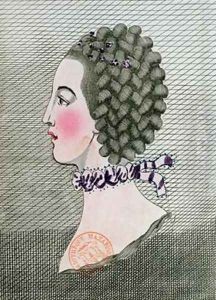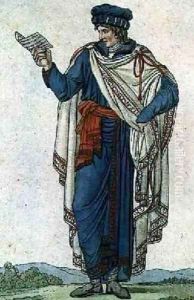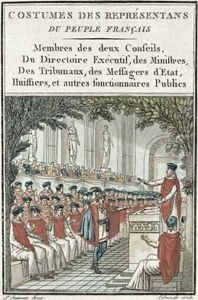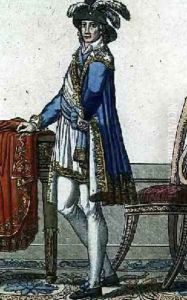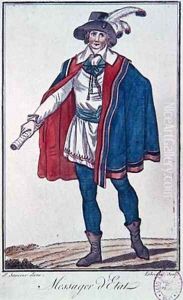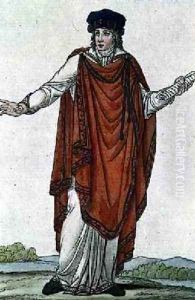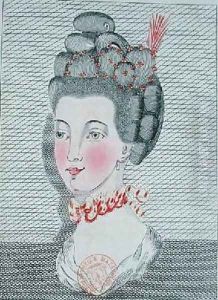Legros or Le Gros, Sauveur (Jean Saveur) Paintings
Sauveur Legros, also known as Jean Saveur Le Gros, was a notable French artist born in 1743. He emerged during a period of significant transition in French art, navigating the changes from the Rococo style, with its emphasis on decorative frivolity and lightness, to Neoclassicism, which sought to return to the simplicity, straight lines, and noble themes of ancient Greek and Roman art. Legros' contributions, however, remain relatively obscure in the broader narrative of art history, partly due to the overshadowing fame of his contemporaries such as Jacques-Louis David and Jean-Honoré Fragonard.
Legros was primarily known for his work as a painter, though specific details about his training and early career are sparse. The artistic environment of the time was highly influenced by the French Academy, which dictated the aesthetic standards and themes considered appropriate for serious art. Legros, like many artists of his era, would have been expected to master the techniques of drawing and painting the human figure, landscapes, and historical scenes that conformed to these ideals.
Despite the lack of detailed records on his individual achievements, it is known that Legros worked during a tumultuous period in French history, which included the lead-up to and the events of the French Revolution. This era was marked by dramatic shifts in political, social, and cultural norms, all of which deeply impacted the art world. Artists were increasingly drawn into political discourse, either through the subjects they chose to depict or through direct engagement with revolutionary events and ideals. The revolution brought about a new demand for art that reflected the values of liberty, equality, and fraternity, themes that began to permeate artistic expression towards the end of the 18th century.
Legros died in 1793, a year that saw the height of the Reign of Terror, a period of extreme violence and political purges during the French Revolution. The precise impact of these events on Legros' life and work is not well-documented, but his death during this time suggests that he experienced the profound upheaval that defined the era. The legacy of Sauveur Legros is a reflection of the complexities and uncertainties faced by artists working during a time of revolutionary change. While his name may not be as widely recognized as some of his peers, his life and work embody the challenges and transformations of the late 18th-century French art world.
